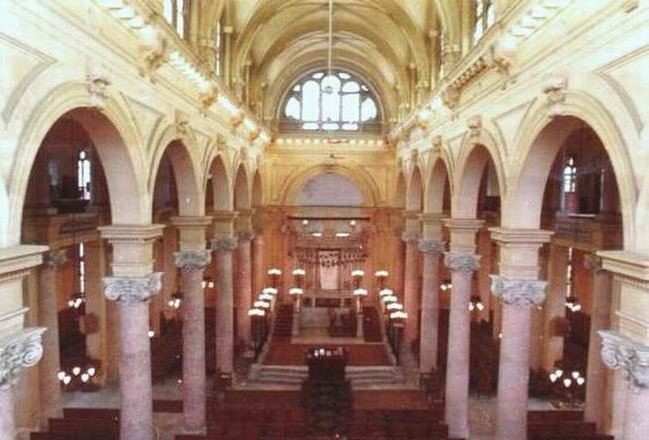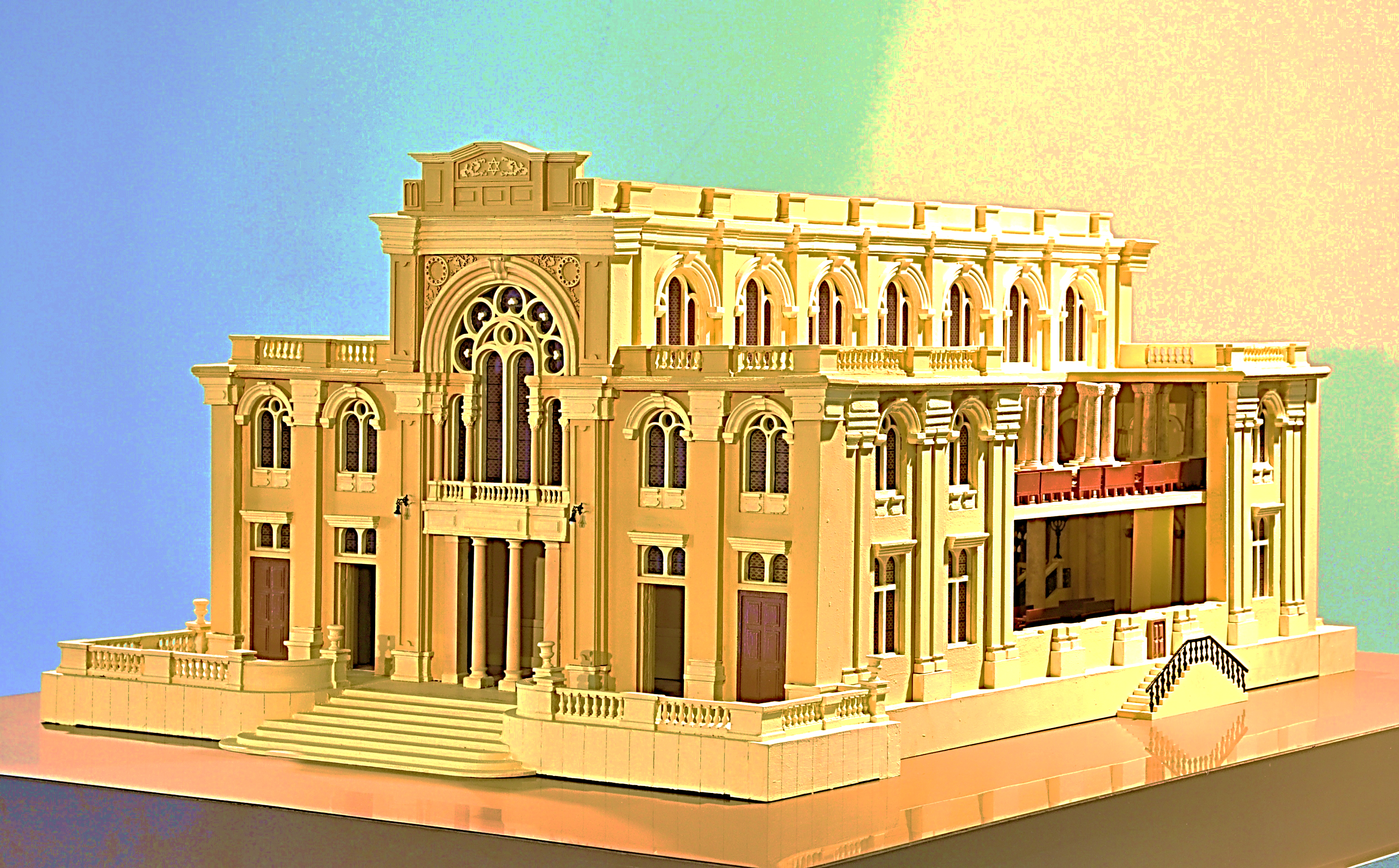Alexandria Synagogue replica,
at Beit Hatefutsot, Museum of the Jewish People in Tel-Aviv
From "Point of No Return" – (2012)
The model of Eliyahu Hanavi synagogue now at the Museum of the Jewish People, Beit Hatefutsot
A model of the largest synagogue in the Middle East, the Eliyahu Hanavi Synagogue in Alexandria, has been unveiled at Beit Hatefutsot in Tel Aviv, the Museum of the Jewish People (formerly the Museum of the Diaspora), located at the Tel-Aviv University Campus. The model was built in memory of Sami Cohen with a donation from his sister Shosh Hadar. Both were born in Cairo – Egypt, and Shosh now lives in Jerusalem. The model of the Italian-designed synagogue, which rivals the Florence Synagogue in size and beauty, took 18 months to build and will be on display at the entrance of Beit Hatefutsot for two months before joining 20 other Synagogue's models in the Museum's permanent collection. Haaretz has this report:
The synagogue in Alexandria, Egypt’s second largest city, is considered to be the biggest in the Middle East. It was rebuilt in its current form in the mid-19th century, but prior to that it was destroyed twice – the last time under the decree of Napoleon. It was later repaired by an Italian architect and financed by members of the local Jewish community together with Sir Moses Montefiore.
In the second century, Rabbi Judah bar Ilai praised the beauty of the synagogue of Alexandria and said: "He who has not seen the double lined columns of the Great Synagogue of Alexandria, Egypt, has never seen the dignity of Israel in his whole life." The synagogue was so large that a person had to stand by the Chazzan, to wave a flag to signal the praying congregants when to say “Amen.”
In the ancient days of the synagogue, Alexandria was home to a thriving Jewish community. The masterpiece of the spiritual activities in the city was the “Seventy's Translation,” which translated biblical verse to Greek. Even the Jewish philosopher, Philon of Alexandria (Yedidia), lived in the city. In 1940, the Jewish community was 40,000 members strong, but in the years that followed, the numbers dwindled as a result of a fear that the Nazis would advance to Egypt, and later as a result of the rise of Abdel Nasser’s regime. By the 1990s, only 50 Jews were registered as living there.
The Eliyahu Hanavi synagogue still stands in Alexandria today and is maintained by one Jew living in the city and by Egypt’s Supreme Council of Antiquities, which considers it both historically and archaeologically important. The authorities had intended to carry out wide-scale renovations of the place, but those plans fell through when Hosni Mubarak was ousted.
 A smaller replica of the Eliyahu Hanavi synagogue of Alexandria, on display at the
A smaller replica of the Eliyahu Hanavi synagogue of Alexandria, on display at the
permanent collection of Beit Hatfutsot, Tel Aviv. (Photos: Yaakov Brill)
Levana Zamir, chairwoman of the International Association of Jews from Egypt, which was responsible for bringing the synagogue’s replica project, said, “Despite the difficulty in arranging a program to renovate the synagogue, we decided to support the opportunity of building a replica in any way possible. To do this, we used the photos and sketches that were at our disposal.”
Pesach Roder, who built the model, added that he “saw a great challenge in building it. But in order to know what the right measurements of the synagogue are, the right sizes of the halls, the windows etc" he said, "we discretely asked an Egyptian friend who lives in Alexandria to go and measure one of the synagogue's slabs in the floor. Because we knew exactly the amount of slabs that floored the synagogue's main prayer hall, and we also knew that all the slabs on the Synagogue's floor were the same size. It was quite a dangerous adventure for him, but he was finally able to measure and informed us that the size of each slab is 60 cm by 60 cm. We were then able to recreate the synagogue and all the details that were in it, using the photos as inspiration, and those measurements for the authenticity of this master piece.”
|
The same replica of Eliahu Hanavi Synagogue at Beith Hatefutsot, view from the front |
 |
 עברית
עברית
 56 Pinsker St., Tel Aviv - zip code 6356811
56 Pinsker St., Tel Aviv - zip code 6356811
 hitahdutoleimisrayim@gmail.com
hitahdutoleimisrayim@gmail.com

